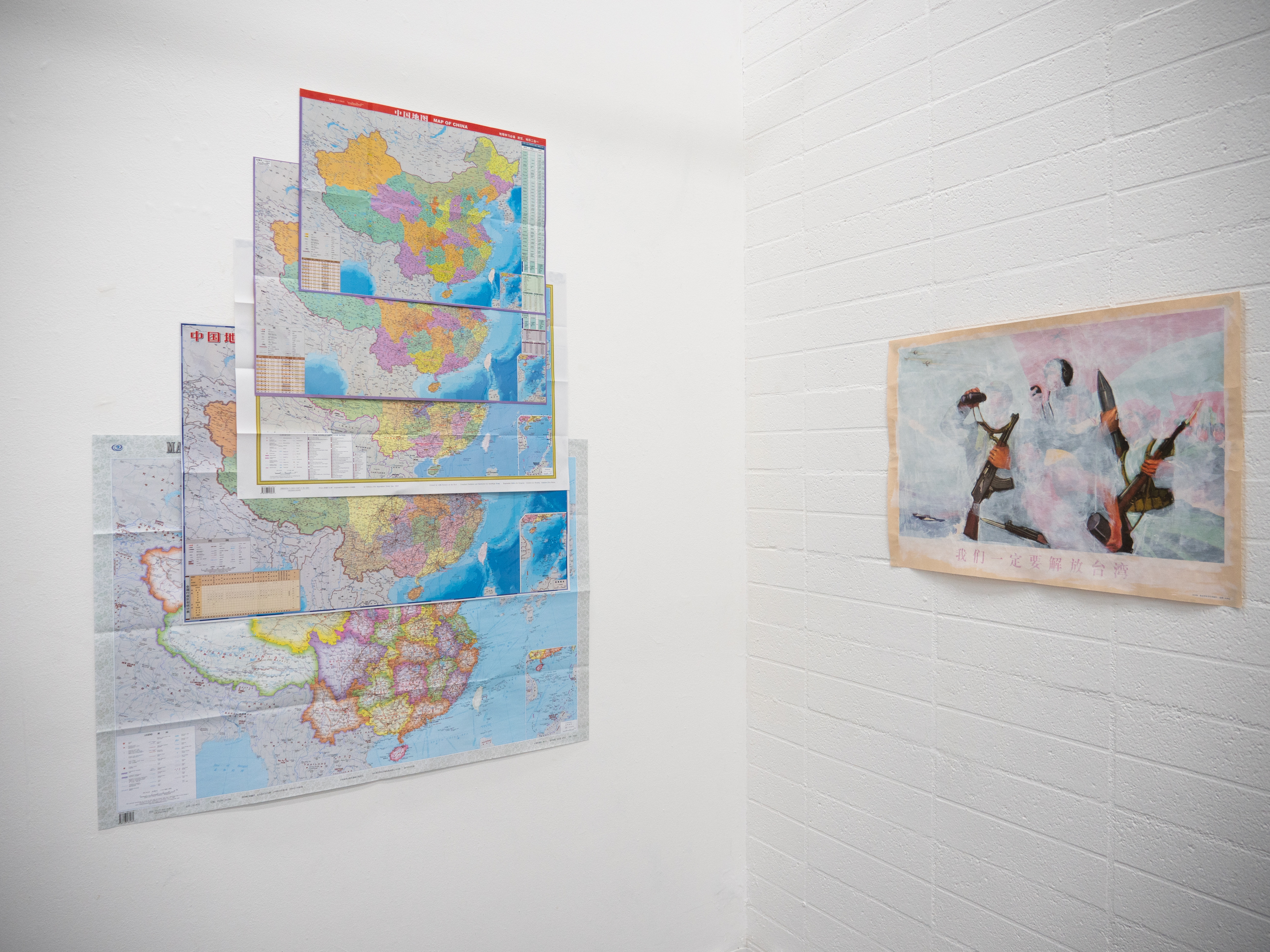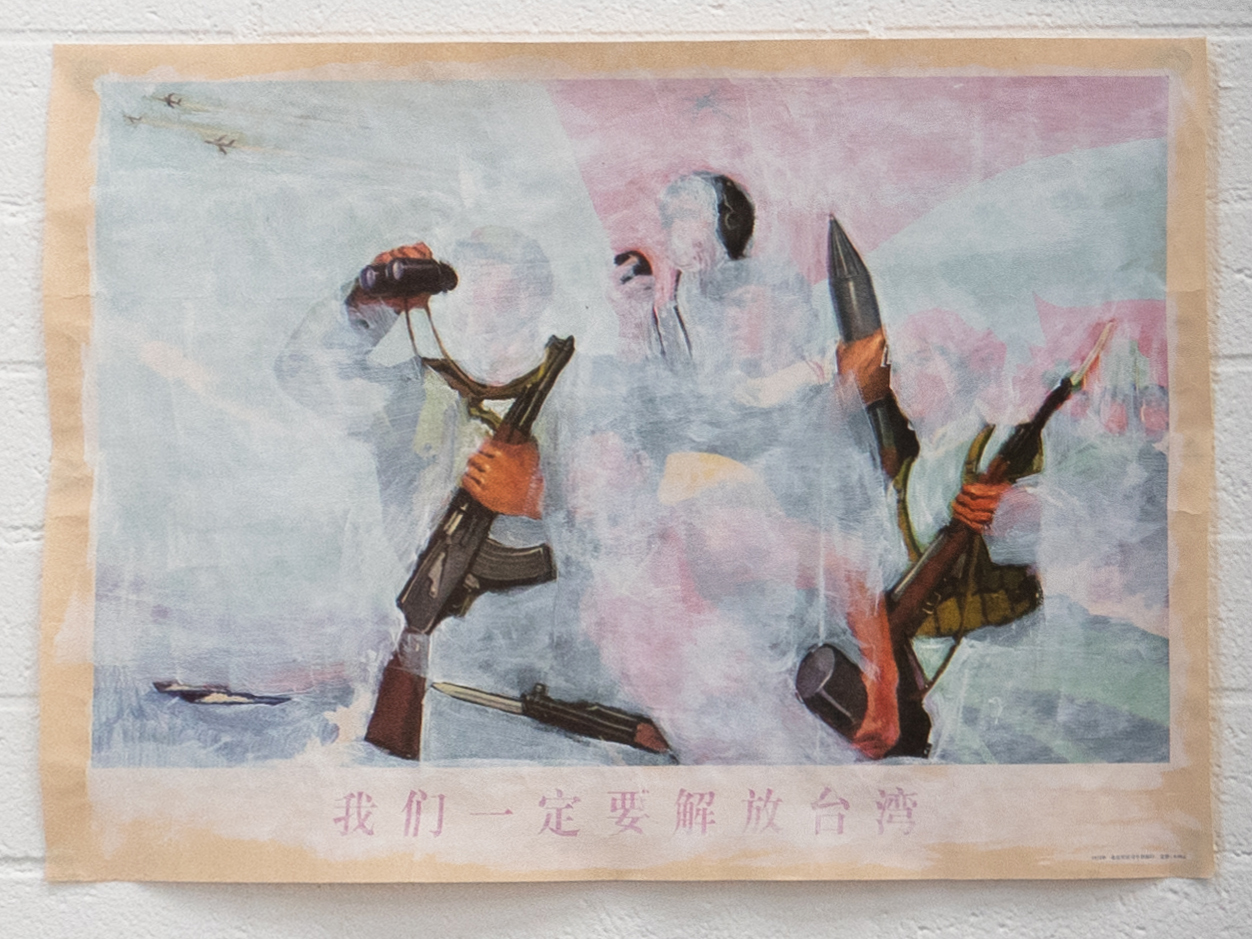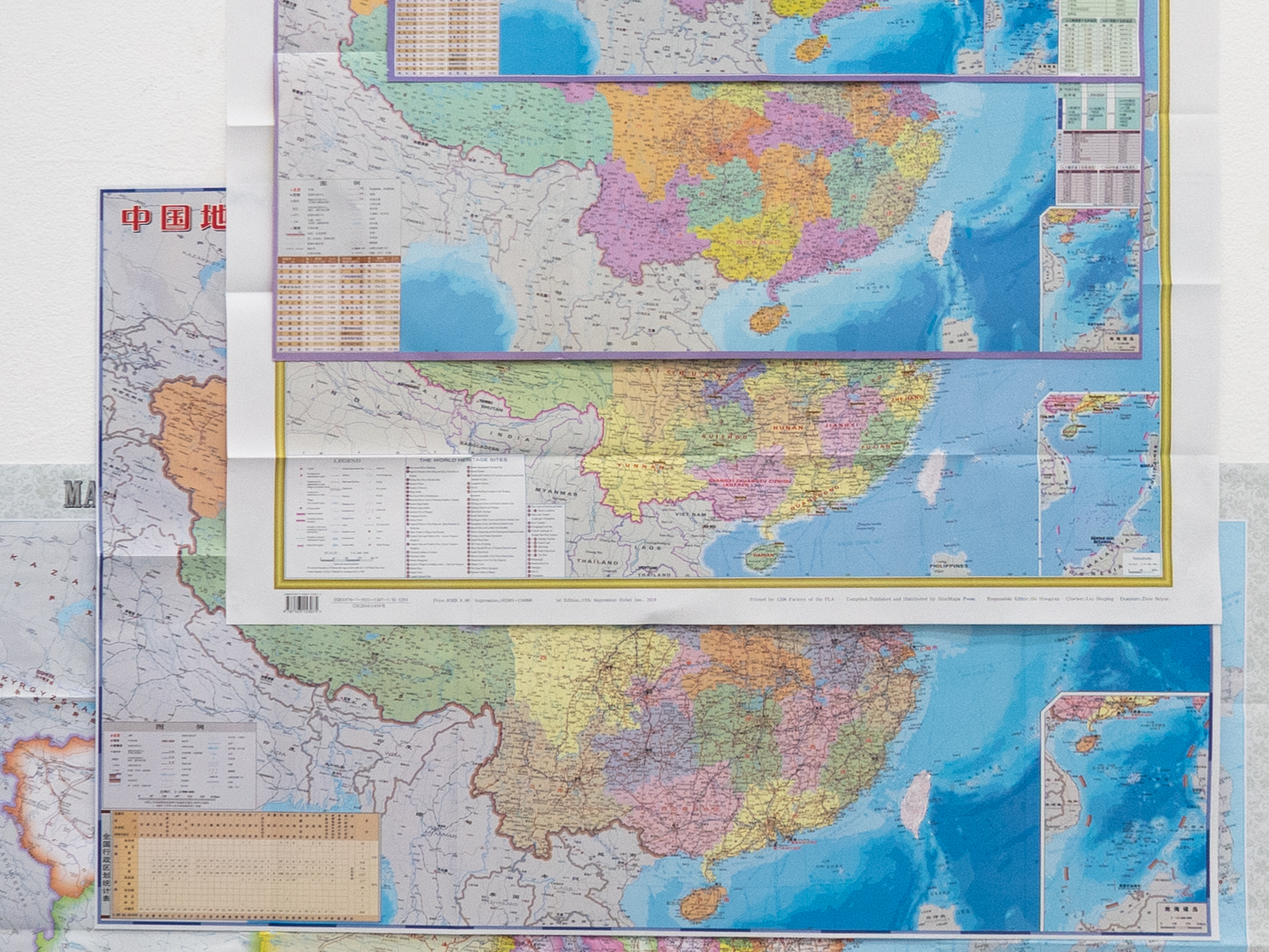
ERASING ERASURE, 2019 (left)
Acrylic on Chinese maps | 101.6 x 76.2 cm (40 x 30 in)
THIS IS LIBERTY, 2019 (right)
Acrylic, found Chinese poster | 50.8 x 33 cm (20 x 13 in)
ERASING ERASURE
The project involves analyzing five Chinese maps available in the market that depict the claimed territory of the People's Republic of China using different colors and dashed lines. However, they represent Taiwan as the same color as China, despite its independent status. The maps also disregard the opposition from many countries regarding China's claim over South China Sea. The artwork challenges this narrative by painting Taiwan with a color similar to neighboring countries and the 9 dash lines with the color of the ocean. This artwork aimed to highlight how Chinese mass production tools and media shape individuals' perceptions of Taiwan and the importance of individuals' resilience in countering this assertive narrative.
THIS IS LIBERTY
White is painted on a Chinese poster from 1972 to highlight the weapons in the image highlighting the clear intention of People’s Republic of China in taking over Taiwan militarily.
In 1972, a Chinese poster was produced by Beijing Military Headquarters as a piece of art. The poster features People's Liberation Army in their uniforms and weaponry. The line on the bottom of the poster reads "We have to liberate Taiwan" in simplified Chinese. This phrase is a reflection the Chinese government's determination to assert its claim over Taiwan through military means.
It is worth noting that the cost of the poster was only 0.08 yuan, which indicates that the government was willing to invest in spreading its message through art.
It is important to note that the poster's production occurred during a time when the United States' One-China policy was first stated in the Shanghai Communiqué of 1972. This policy acknowledged that both sides of the Taiwan Strait maintained there was only one China and that Taiwan was a part of China. The policy reaffirmed the U.S.'s interest in a "peaceful settlement" of the Taiwan question and is part of the U.S.'s "strategic ambiguity" tactic to build a connection with the People's Republic of China. In the same year, Taiwan lost diplomatic relationships with several countries, including Argentina, Greece, Japan, and Australia.

